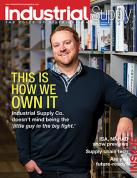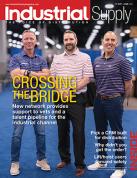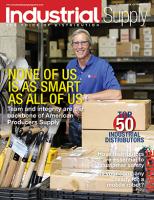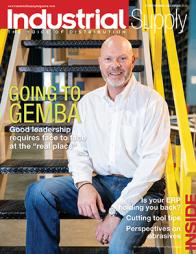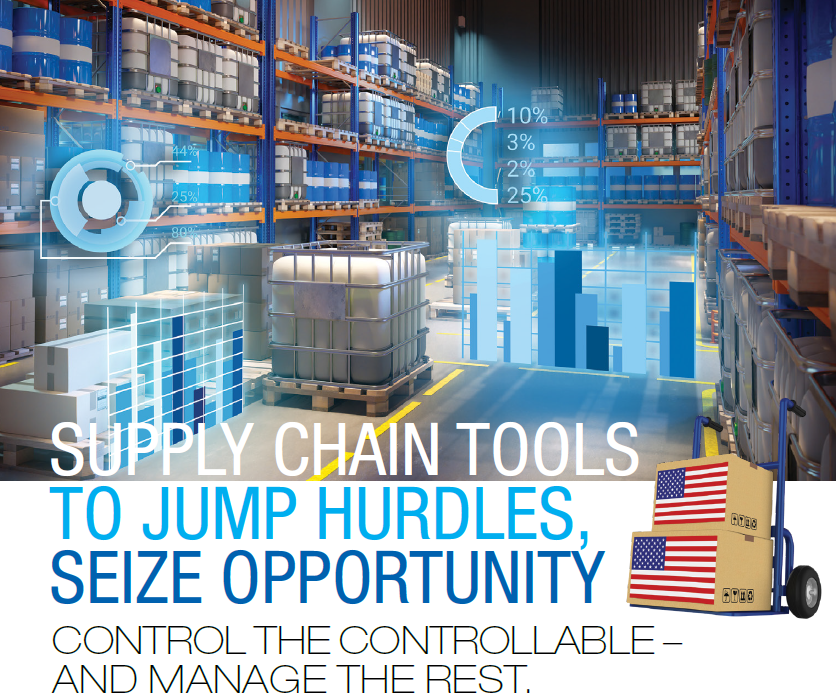 |
| istockphoto.com |
by Kim Phelan
That’s the latest assessment from supply chain expert, Lisa Anderson, president of LMA Consulting Group Inc. (www.lma-consultinggroup.com) She says the resurgence will be fast and powerful, and ready to scale will reap the greatest benefits.
 |
| Anderson |
“When manufacturing takes off, it will be like trying to catch raindrops in a storm – you won’t be able to keep up unless you’re already on top of it,” said Anderson. “Companies that proactively assess their supply chain, invest in automation and build resilience will have a distinct advantage.”
The pandemic exposed vulnerabilities in global supply chains, bringing renewed attention to the importance of domestic manufacturing, according to Anderson. As supply chain disruptions, geopolitical risks and economic shifts continue, companies are recognizing the value of regional production, automation and digital transformation to stay competitive.
Elon Musk recently stated in a Tesla earnings call, “We need to make manufacturing cool again in America.” Anderson said she agrees. “Manufacturing is no longer just an operational function; it is a strategic driver of business success.”
Government policies will fuel the shift, Anderson asserts. New trade, energy and tax policies are going to incentivize domestic production. Examples include:
? The America First Trade Policy is investigating trade deficits and pushing for stronger domestic manufacturing policies.
? The announced 100% tariff on foreign semiconductors is aimed at accelerating U.S. chip production and reducing dependence on Taiwan.
? Incentives for reshoring medical and pharmaceutical manufacturing are gaining traction to protect national security.
As supply chains continue to shift, companies must take proactive steps to assess their manufacturing footprint, supply chain risks and operational efficiencies.
WHAT BUSINESSES SHOULD DO NOW
- Reassess Supply Chain Strategies. Companies should explore reshoring, nearshoring and vertical integration to mitigate risk and increase agility.
- Invest in Technology and Automation. Manufacturing success will depend on advanced ERP systems, automation, robotics and predictive analytics.
- Implement SIOP (Sales, Inventory & Operations Planning) Process. A structured SIOP process improves demand forecasting, inventory optimization and customer responsiveness.
“The manufacturing landscape is changing rapidly, and companies that are thinking ahead will dominate their markets,” Anderson added. “This is the time to act, optimize and position for long-term success.”
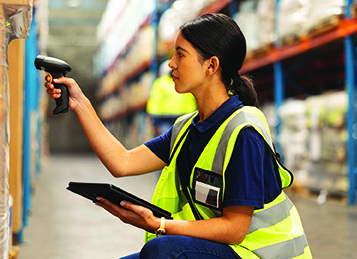 |
| istockphoto.com |
BREAKING IT DOWN FOR DISTRIBUTORS
Before they can lasso manufacturing opportunity, distributors have to tackle some challenges with regards to their supply chain systems.
“One of the biggest challenges distributors face is managing supply chain elements beyond their direct control that significantly impact their ability to serve customers and manage costs,” said Amber Salley, vice president of industry solutions at GAINSystems.
 |
| Salley |
She adds that inventory shortages remain a key frustration, particularly in the post-pandemic landscape, where supply-demand imbalances persist. Supplier OTIF (On-Time, In-Full) performance is another critical issue, as inconsistencies can lead to stockouts, excess inventory, or reactive expediting. Additionally, says Salley, transport disruptions – whether due to port congestion, labor strikes, or geopolitical factors – continue to cause unpredictable lead times, further complicating planning efforts.
“Distributors are increasingly seeking ways to mitigate these risks through better data-driven decision making, predictive analytics, and flexible supply chain strategies,” Salley said.
According to Ryan Polakoff, president and CEO at Nexterus, the issues are expansive and ever-growing.
 |
| Polakoff |
“From tariff uncertainty to continued port congestion, increasing freight rates and lack of visibility, supply chain disruptors continue to grow in size and diversity,” he said. “However, there’s a general bullishness with specificity that the transportation market will begin to see relief in the back-half of 2025, which will help distributors optimize profits and planning.”
According to Cyndi Brandt, vice president of fleet solutions at Descartes, the first major supply issue is changing and evolving customer expectations. “Today, B2B customers want the same experience that they are getting in the B2C world. This includes proactive notifications, complete visibility to the order journey, and faster delivery with more options,” she said.
Next is pursuing a digital transformation journey. Brandt says legacy systems are abundant in many distributors and hinder efficiency and productivity. She sees many causes for resistance to change including cost, concern on the effect on long-term employees, and not having the correct staff to design and implement the new systems.
The good news, she adds, is that new, modern systems allow distributors to create new frictionless ways to interact with customers that ultimately increase the spend per customer and reduce the costs of additional deliveries when an incomplete order is placed. Modern systems allow distributors to meet customers where they want to be served. “If they don’t transform, there will be a loss of customers and revenue,” she added.
Overall, Brandt says, costs are rising, products, labor, transportation all are rising and creating pressure on margins. She cites Descartes’ study, How Bad Is the Supply Chain and Logistics Workforce Challenge? showing that 76% of the supply chain and logistics leaders surveyed are experiencing notable workforce shortages in their operations, and 37% would characterize the resource shortage they face as high to extreme. Increasing employee turnover and the difficulties of finding qualified employees all result in higher wages to replace employees who leave.
The last big issue is demand volatility, according to Brandt. Today, there are record closings and consolidations of businesses for various reasons including changing geographic demographics, increased costs, and scarcity of employees. However, the biggest variable is simply that customer order volume is not predictable.
 |
| Brandt |
“They shop for the lowest prices if relationships are not built, and technology doesn’t encourage them to use a particular distributor because of the ease of doing business,” Brandt said. “Add in the uncertainty around potential economic policies, and it could cause a slowdown in work.”
TECHNOLOGY CAN HELP
Supply chain challenges and trends have been taken into consideration among suppliers of supply chain solutions.
Distributors are using every means at their disposal to truly understand the story their data is telling, says Polakoff. “If a baseline of current operations can be understood, risks and potential scenarios can be simulated to reduce network exposure and mitigate rising costs,” he said. “Then, no matter how volatile of an issue crosses the proverbial desk of the distributor, they have the ‘answers to the test’ in their back pocket, making operational pivots easier from both a process and technology perspective.”
Salley notes that one of the most significant supply chain solution trends is the increasing use of AI and machine learning in supply chain solutions, moving beyond overhyped applications to practical, high-impact use cases. Generative AI (GenAI) is also emerging as a valuable tool for automating reports, configurations and data analysis, helping distributors make faster, more informed decisions.
Another key shift, she adds, is the rise of targeted technology adoption, where distributors invest in specialized solutions to address specific operational challenges rather than relying solely on their ERP or legacy supply chain platform.
“Instead of large-scale system overhauls, companies are layering in best-in-class capabilities to solve discrete, high-value problems – such as improving lead time accuracy, optimizing inventory levels, or implementing intelligent order sensing,” Salley said.
She adds that when evaluating solutions, distributors should prioritize:
- AI-powered decision support (e.g., demand sensing, lead time prediction, supply risk detection)
- Interoperability to ensure seamless integration with existing systems
- Automation capabilities to reduce manual intervention and improve efficiency
“This shift toward targeted, high-value technology adoption enables distributors to be more agile, improve operational performance, and gain a competitive edge without the complexity and risk of full-scale system replacements,” Salley said.
Going back to the customer, Brandt says she’s seen a wave of innovation during and after the pandemic in how distributors communicate with customers.
“The natural progression of this technology was accelerated at unfathomable speeds. The B2C market led the way in informing consumers every step of the journey an order took – multiple emails and text messages confirming orders, alerting when orders were on the way and even when delivered.
“This experience is now being demanded by B2B customers,” Brandt continued. “It will be the competitive edge to retain and attract new customers by being able to proactively communicate with them across multiple modalities.”
This will include information about the order journey, chatting with delivery drivers, managing appointments, and collecting feedback about both the delivery and the driver. The benefit to the consumer is clear, Brandt says, setting expectations and preparing for a delivery. However, the distributor also benefits greatly because they can respond to changes, comments or concerns in near real-time protecting the customer relationship.
“This type of new technology doesn’t come without some sort of digital transformation though,” she added. “This requires looking at current or legacy systems and making plans to implement and adopt newer technologies that allow for greater services to be performed, potentially offering omni-channel experiences, and collecting more data and analyzing it using AI tools to identify trends and operational leakage.”
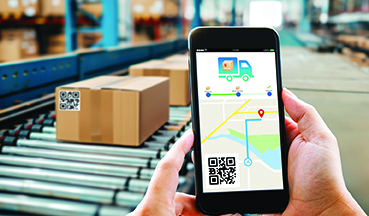 |
| istockphoto.com |
FEATURE AND BENEFITS
Descartes. Brandt says Descartes is investing heavily in two key areas: digital customer engagement experiences and machine learning and digital twins. Why? The last mile is simply struggling to meet changing expectations and costs continue to increase. Digital customer engagement and using machine learning and digital twins to make the planning process more intelligent will address these challenges
“Our digital customer engagement platform allows distributors to provide clear, timely communications about orders and the journey they are on from initiation through delivery. We also offer the ability to three-way chat between customers, drivers, and dispatchers as well as collect feedback on the delivery and/or driver. This provides a better experience for customers, keeps them informed, and allows distributors to respond quickly to changes, comments or complaints.”
Machine learning, a segment of artificial intelligence, utilizes algorithms to analyze data, identify patterns and make predictions, Brandt explained.
“We are applying this to data elements that have a direct effect on route planning. Today, for example, we are looking at baseline versus ML relative to service times in combination with other data elements – we’ve seen that there is a possibility to identify leakage which means that there are opportunities to create routes with more stops.”
She adds that digital twins allow you to see a simulated model of what happened using real-time data. It points out where cost leakages exist in last mile data points like service time, out of route sequences, depot delays and more. “We have a unique execution product that collects data from the delivery and proactively identifies inefficiencies and exceptions so that operations can dive in and find the cause and implement change.”
She points to safety as an up-and-coming issue as insurance costs continue to increase along with more and more litigation and nuclear verdicts.
“It is mission critical that customers implement a consistent safety plan and message to establish the habit, or prevent bad habits from happening, all while correcting bad habits along the way,” Brandt said. “We ensure this happens by providing proactive, supplemental, and reactive safety-focused microlearning that must be completed before they can start their day.”
GAINSystems. Like Descartes, one of the most impactful innovations GAINS is talking about is ML-powered lead time prediction (LTP). Traditional lead time calculations rely on averages that fail to account for volatility. Using machine learning can help analyze patterns across SKUs, suppliers, and time horizons, delivering more accurate forecasts—even for new products or unpredictable conditions.
“Additionally, we advise looking for solutions that are built on a composable framework, meaning distributors can deploy LTP as a standalone service or integrate it seamlessly with their existing ERP and planning systems,” Salley said. “This flexibility allows for incremental innovation – addressing specific challenges without the cost and disruption of a full system replacement.
“Distributors today need solutions that adapt to change, rather than forcing them into rigid, all-or-nothing upgrades,” she continued. “By embracing AI-driven insights and composable architecture, they can gain a competitive advantage in an increasingly volatile market.”
Nexterus. Meanwhile at Nexterus, Polakoff says his company is focusing on multi-modal transportation visibility for optimal freight planning/tracking, along with full-scale network optimization and risk mitigation for core operations planning and management.
This article originally appeared in the March/April 2025 issue of Industrial Supply magazine. Copyright 2025, Direct Business Media.







